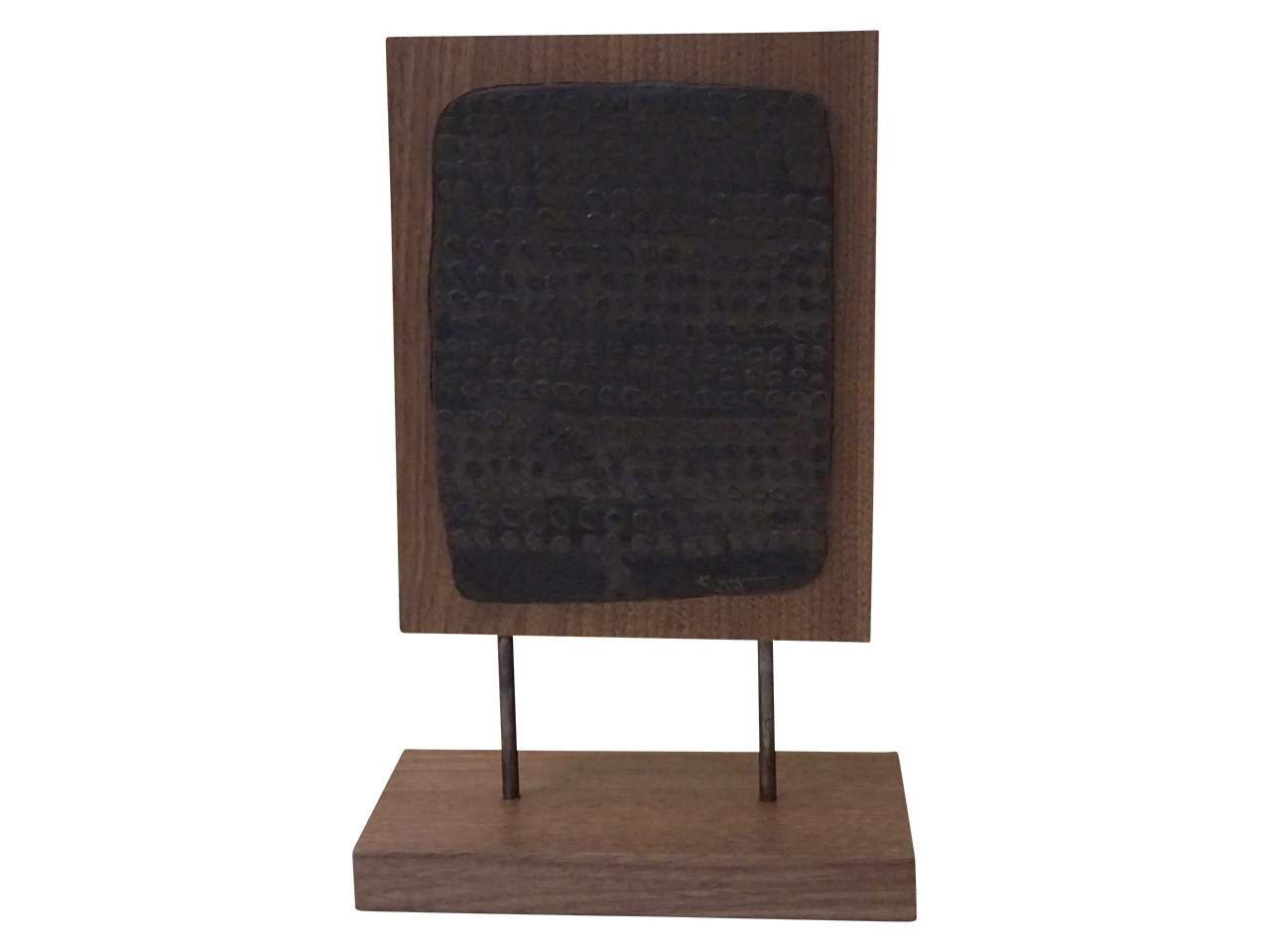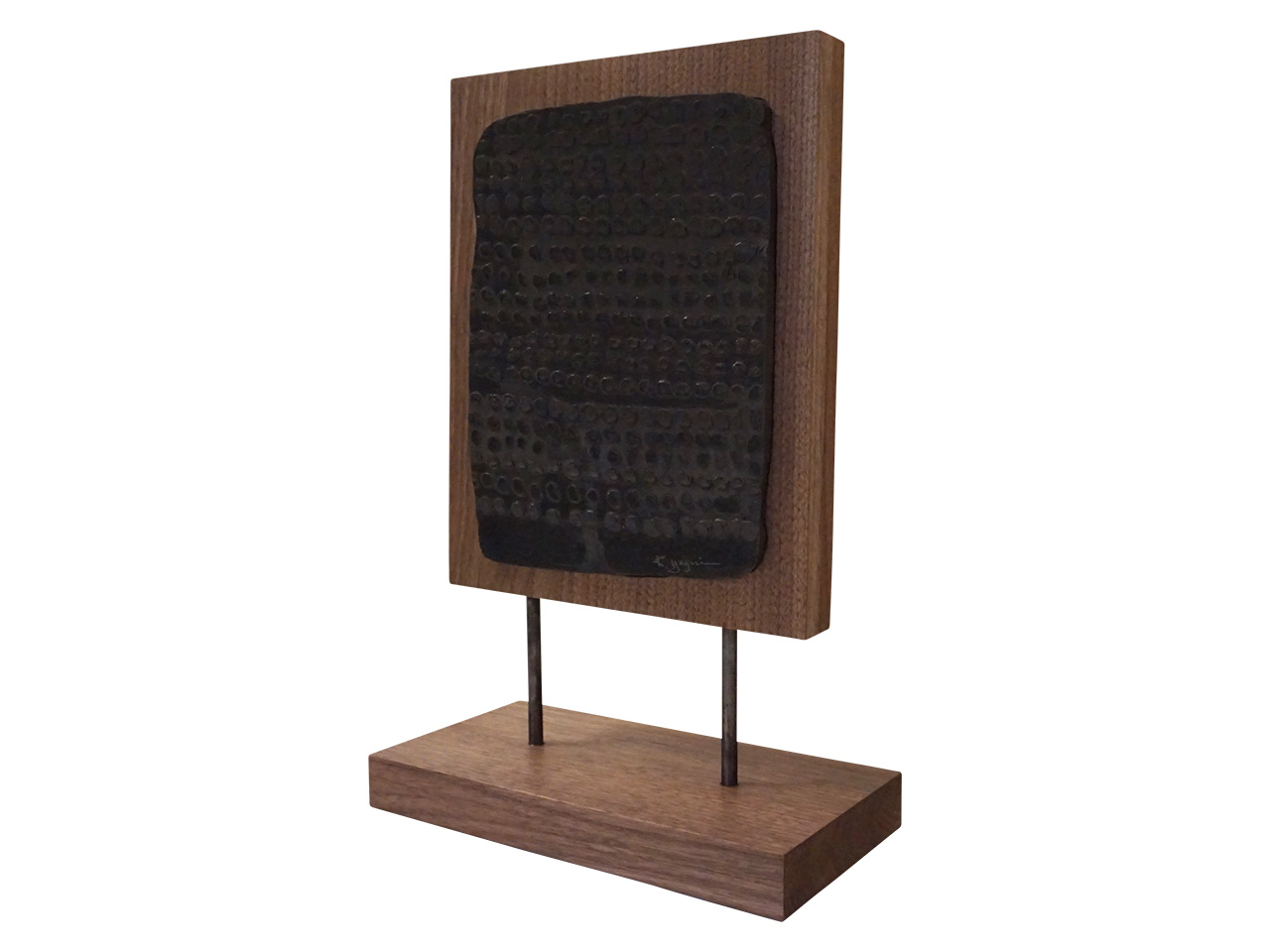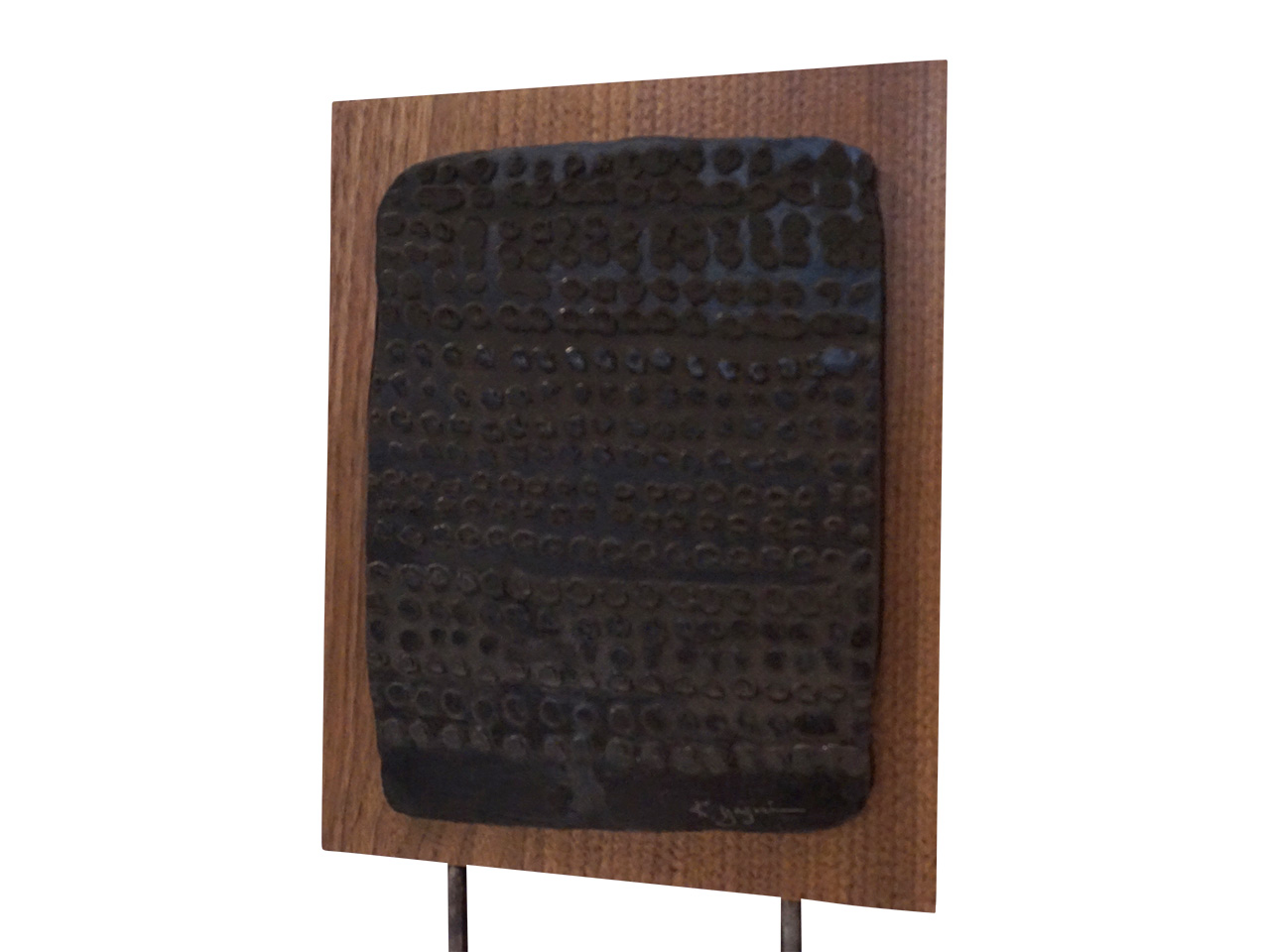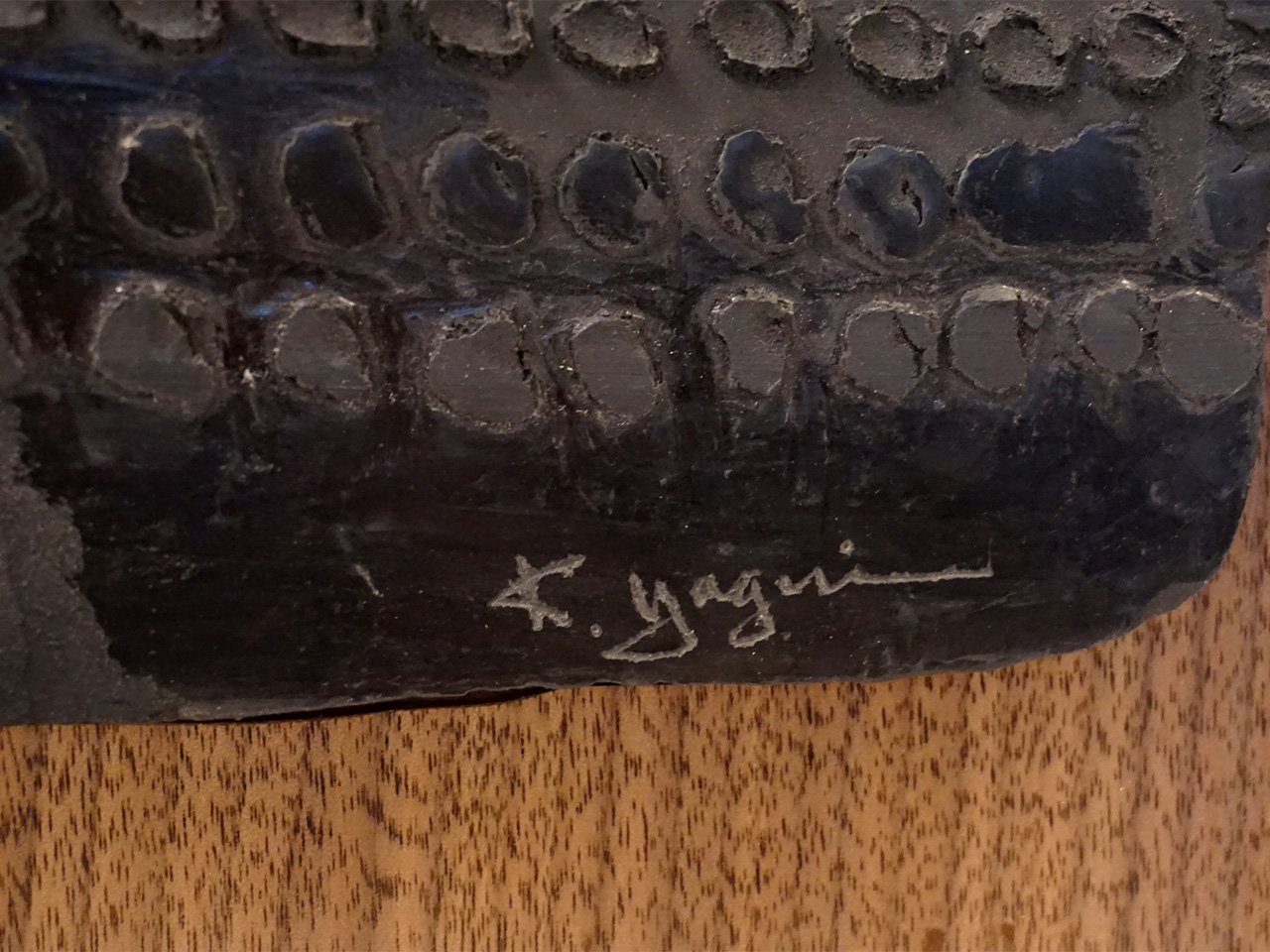八木 一夫/Yagi Kazuo
陶芸家の八木一夫は、戦後の前衛陶芸家グループ「走泥社」の中心人物です。また、彼は器の実用性を捨てて芸術性を突き詰めたオブジェ焼きの先駆者でもあり、陶芸界の常識を覆す独創的な造形を意欲的に生み出しました。
八木は1918年、陶工の八木一艸(いっそう)の長男として、京焼の本場である五条坂界隈で生まれ育ちました。1937年に京都市立美術工芸学校彫刻科を卒業した後は、国立陶磁器試験場の伝習生となりますが、その際に師事した沼田一雅から大きな影響を受けています。
兵役や教員の時代を経て陶芸に専念するようになった八木は、1948年に、鈴木治、山田光、松井美介、叶哲夫とともに、その後50年存続することとなる「走泥社」を結成しました。1950年前後は、クレーやミロ、ピカソ、エルンストに着想を得た図や模様を器物に施し、新しい造形を模索していた八木ですが、1954年にカフカの「変身」に由来する【ザムザ氏の散歩】を発表すると、前衛陶芸の作家として一躍注目を集めました。1955年以降は釉薬を施さないオブジェ焼きを精力的に制作していましたが、1964年に入ると、より高い造形性を求めて黒陶作品に挑んでいきます。機知と独創性に富んだユーモラスな作品が次々と創出されましたが、特に本や手をモチーフにした晩年の作品は造形的にも完成度が高いと言われています。
既存の概念にとらわれない八木の作風は、一見すると伝統の否定とも受け取れます。しかし、陶芸の中心地である京都で伝統を学んだ八木は、先述のような前衛的な創作のみならず、伝統的な茶碗や壺の制作も生涯にわたって続けていました。伝統を軽んじることなく、その土台に自身の思想や感性を注ぎこみ、自分なりの新しい伝統を作りあげたところに、陶芸家としての八木の本質が見えてきます。
Kazuo Yagi, a ceramic artist, played a central role in the avant-garde ceramic artist group called “Sodeisha” in the post-war era. He was also a pioneer of object firing, rejecting the functional aspect of vessels and pushing the boundaries of artistic expression. He actively generated innovative and imaginative forms that challenged the established norms of the ceramic art world.
Yagi was born and raised in the Gojyozaka area of Kyoto City in 1918 as the eldest son of ceramic worker Yagi Issō, known for Kyo-yaki ceramics. After graduating from the Sculpture Department of Kyoto City School of Fine Arts and Crafts in 1937, he became an apprentice at the National Institute of Ceramic Research, where he was greatly influenced by his mentor, Kazumasa Numata.
After serving in the military and working as a teacher, Yagi devoted himself to ceramics. In 1948, he co-founded “Sodeisha” with Osamu Suzuki, Hikaru Yamada, Misuke Matsui, and Kanou Tetsuo, and the group continued to thrive for the next 50 years. Around 1950, Yagi explored new forms by incorporating images and patterns inspired by artists such as Klee, Miró, Picasso, and Ernst into his vessels. However, it was in 1954 when he gained immediate attention as an avant-garde ceramic artist with his piece “Mr. Zamza’s Stroll” inspired by Kafka’s “Metamorphosis” From 1955 onwards, he energetically created unglazed object-fired pieces. In 1964, he further pursued a higher level of plasticity expression through black ceramics. He created humorous works full of wit and originality one after another. His later works, particularly those featuring books and hands as motifs, are considered to have achieved a remarkable level of plasticity completion.
Although Yagi’s style initially seemed to reject tradition, having learned from the tradition-rich city of Kyoto, the center of ceramic art, he continued to create traditional tea bowls and jars throughout his life, alongside his avant-garde creations mentioned earlier. Without disregarding tradition, he infused his own thoughts and sensibilities into its foundation, thereby creating his own new tradition. It is through this process that we catch a glimpse of the essence of Yagi as a ceramic artist.




作品名:Haiku
サイズ:29.5×22.5cm
価格:ASK
価格は税抜き表示です

